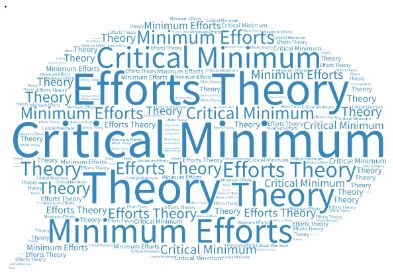The critical minimum effort theory was propounded by Prof. Harvey Leibenstein in his book Economic Backwardness and Economic growth. He discusses that underdeveloped countries are characterized by vicious circle of poverty which keeps them around a low income per capita equilibrium state. This circle is believed to be so vicious and deep rooted that no small effort can be expected to break it up. The only way out to develop these countries is to make minimum amount of investments (Critical minimum effort) based on relationships between factors, per capita income, population growth, and investment, which would raise the per capita to a level at which sustained development could be maintained.

According to him, “every economy is surrounded with shocks and stimulants”. Shocks (weak point of a underdeveloped country) are understood as a tendency of per capita income to fall or any event (external) to the system due to which per capita income is reduced initially, whereas stimulants (can change the sustainability of underdeveloped countries) tend to increase the per capita It can be possible that with time to time there may be shocks and stimulants to disturb the equilibrium of underdeveloped economies. He explains that in order to raise income, certain minimum amount of effective measures are required. Also, if per capita income is not raised at once above a certain level, certain income depressing forces will be set in operation during the process of development, and these forces will in the end outrun the income-raising forces and bring per capita income back to its previous level. There are many factors that are responsible for depressing of per capita income in under developed countries, like, zero sum entrepreneurial activities, conservative activities of organized and unorganized labor, the resistance to new knowledge and ideas and attachment to old ideas, increase in consumption, and unproductive use of those resources which could be used for capital accumulation, increase in population, the high capital-output ratio. In order to overcome these influences which keep an economy in backwardness, a sufficiently large critical minimum effort is required to sustain a rapid rate of economic growth. In this way, on the one side the zero sum activities could be overcome, and positive sum activities could flourish. As a result of critical minimum effort, the per capita income will ultimately rise, leading to increase in the level of savings and investments; they will in a turn lead to an expansion of growth agents, the capital-output ratio will come down and the income depressing forces will get weaken. Such a social environment will be created which will promote social and economic mobility. He assumed that the most important induced income-depressing force is population growth and for backward economy there exist a positive functional relation between per capita income and population and that population growth always means an increase in the labor force. Further on the above statement, additions to the labor force are subject to the law of diminishing returns because of the relative scarcity of land and capital. Thus an upward or downward change in income will lead to a change in population in the same direction, with little change in the long run.
Read about: Advocacy Planning Concept, Rational Planning Model, Political Economy Model